
Become a 3D animator for film and games! Get specialized training to fast-track your career with CG Spectrum’s online 3D animation courses. Learn directly from expert animators working on hit films and best-selling games. Find out more.
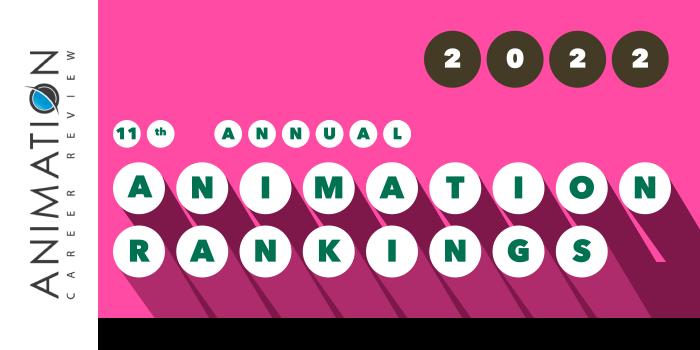
| Ranking | School | Country |
|---|---|---|
| 1 | Gobelins | France |
| 2 | Sheridan College | Canada |
| 3 | Bournemouth University | UK |
| 4 | The Animation Workshop/VIA University College | Denmark |
| 5 | Royal College of Art | UK |
| 6 | Emily Carr University of Art + Design | British Columbia |
| 7 | RMIT University | Australia |
| 8 | École Supérieure des Métiers Artistiques | France |
| 9 | RUBIKA | Multiple |
| 10 | Media Design School | New Zealand |
| 11 | Griffith University | Australia |
| 12 | ARTFX | France |
| 13 | University of Technology Sydney | Australia |
| 14 | Ontario College of Art and Design | Canada |
| 15 | Pearson College of London | England |
| 16 | MoPA School of Animation | France |
| 17 | Beijing Film Academy | China |
| 18 | Teesside University | England |
| 19 | University of Melbourne | Australia |
| 20 | Université Laval | Canada |
| 21 | Nanyang Technological University | Singapore |
| 22 | University of Hertfordshire | UK |
| 23 | ChungKang College of Cultural Industries | South Korea |
| 24 | York University | Canada |
| 25 | Image Campus | Argentina |
Our 2022 rankings of the top international animation colleges in the world, excluding the US. For this ranking we only consider formal degree programs (bachelor's degree or equivalent). For an explanation of our ranking criteria, click here.

Gobelins, l'école de l'image (Gobelins, School of Images) has been around since 1964, making it one of the world’s oldest animation schools. A member of the European Animation School Network, Gobelins serves more than 1,100 students enrolled in programs that lead to a BA, MA or Professional Certification.
The Animation Program at Gobelins has multiple pathway options including the 3D Character Animator Professional Certificate (Level II, 2 years), the 3D Character Animator Professional Certificate (Level II, 3 years), the BA in Animation and Character Animation and Animated Filmmaking (three years), and the MA in Character Animation and Animated Filmmaking (two years).
An Animation Preparatory Year Program is available and open to students with a high school diploma who would like to develop basic artistic and technical animation skills. This program allows students to create at least one project and a portfolio. The Animation Preparatory Year Program can be an entry point for the Gobelins BA in Animation Program.
Across programs, students will explore areas such as acting, 3D layout, body mechanics, animation of characters, motion capture techniques, character and background design, scriptwriting, direction, sound design, storyboarding, the 3D pipeline, dynamics of movement, editing, special effects, and compositing.
Students in all Gobelins Animation Programs have the opportunity to produce a number of short films and a professional demo reel. Students will complete a mandatory two-month internship in France or abroad and participate in workshops and projects sponsored by partner companies and public institutions such as the French Ministry of Justice, Universal Music, Dell, Netflix, BMW, Musée Picasso, and Olympus.
Thanks to events such as the Speed-Recruiting event, which attracts more than 50 companies during the last year of the programs, graduates of the Gobelins Animation Programs enjoy a near 90% job placement rate within six months of graduation.

Sheridan College houses the Faculty of Animation, Arts & Design (FAAD), Canada’s largest art school. Established in 1967, this public polytechnic institute serves 41,000 students, making it one of Canada’s largest universities by enrollment. Programs at Sheridan College are housed in four faculties across three Ontario campuses including Oakville, Brampton, and Mississauga. In addition to FAAD, Sheridan College is home to the Faculties of Applied Health & Community Studies (FAHCS), Applied Science & Technology (FAST), Humanities & Social Sciences (FHASS), and Pilon School of Business (PSB).
Sheridan College’s FAAD has a Bachelor’s Degree and Graduate Certificate Programs in Animation, Computer Animation, and Digital Creature Animation. The Bachelor’s Degree Program takes four years to complete and the Certificate Programs can be completed in just one year. Across programs, features include access to state-of-the-art facilities at the SCAET (Sheridan Centre for Animation and Emerging Technologies), study abroad opportunities at Dun Laoghaire Institute of Art and Design (IADT) in Ireland, and the opportunity to collaborate on projects in an immersive, hands-on, studio environment.
A major component of the FAAD Animation Programs is mandatory three-month work placement, where students have the opportunity to gain professional experience prior to graduation. Students will also participate in Annual Industry Day, where they will meet with employers from across North America. Sheridan FAAD students will leave the Animation Programs with a professional demo reel of their best work.
Graduates of the Animation Programs at Sheridan College work in television, film and feature animation at major studios in Canada and across North America.

Bournemouth University (BU) is home to the National Centre for Computer Animation (NCCA)—one of just a few research-intensive animation centres in the UK. Serving more than 19,000 students and one of the Top 70 Young Universities in the World, BU is also one of the few institutions that have been granted Houdini Certified School status by Side Effects Software.
The NCCA has three undergraduate Animation course options: BA (Hons) Computer Animation Art & Design, BA (Hons) Computer Animation Technical Arts and BA (Hons) Visual Effects. Students can study the courses for 3 years with an optional 8-week placement, or 4 years with a 30-week placement and will have access to specialist facilities including a new green screen and motion capture studio, as well as animation laboratories, equipped with industry-standard software. All courses culminate with a major project and dissertation, which students may complete individually or in a group.
Graduates of the BA (Hons) Animation degrees at Bournemouth University enjoy a near 90% employment rate or further study within six months of graduation. BU NCCA alumni have worked on films such as Fantastic Beasts: The Crimes of Grindelwald, The Avengers, Blade Runner 2049, Solo: A Star Wars Story, and Dunkirk.
At postgraduate level, the NCCA offers courses in MA 3D Computer Animation, MA Digital Effects, MSc Computer Animation & Visual Effects, and MSc Artificial Intelligence for Media. The Master’s degrees take one year to complete, including an optional three-month placement. Postgraduate students will learn and create in a professional studio environment with facilities that include green screen studios and animation labs, a motion capture studio, and a full suite of industry standard 2D and 3D Software such as Maya, Mari, Z-Brush, Nuke, Adobe Creative Suite, Substance Painter and many more. Other features include a collaborative environment, the visiting practitioners lecture series, and the Master’s Project, with a set production time to create a professional, original project that will be presented at the Degree Show for major industry recruiters.
Graduates from the BU Master's courses are highly sought after within the industry. Our alumni have worked on many high-profile projects, including movies such as Venom, Paddington 2, Avatar, Star Wars, the Lord of the Rings trilogy, King Kong, Shrek, Guardians of Ga'hoole, the Harry Potter series, Sucker Punch, Happy Feet, Monsters vs Aliens, James Bond and Judge Dredd, among many others.
All NCCA students also have the opportunity to attend the Annual BFX Festival, which features masterclasses and talks by award-winning industry professionals.
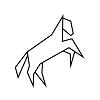
The Animation Workshop/VIA University College (TAW) is part of the School of Business, Technology and Creative Industries. Launched in 1988, TAW serves around 650 of VIA University College’s 17,800 students across seven departments including the Bachelor of Arts Department, Animated Learning Lab, Business Development, Open Workshop – Artist Residency, Visual Talent Center, Professional Training, and Research and Development.
Housed in an old military complex, TAW features include nearly 119,000 square feet of facilities and buildings, 100 instructors who are professionals in the industry, and a creative community of more than 30 animation, games, and new media start-ups, companies, and freelance artists. TAW also hosts the Viborg Animation Festival (VAF)—the biggest animation festival in Denmark.
The Animation Workshop has two formal degree programs for Animators including BA degrees in Character Animation, Computer Graphic Arts, and Graphic Storytelling. Professional training programs, seminars, and non-degree programs are also provided by TAW.
The TAW BA in Character Animation is taught in English and may be completed in 3.5 years. The final semester of the program features a 14-week internship with a production studio such as Illumination, Sun Creature, Aardmann, Nørlum, or Cartoon Saloon. The Computer Graphic Arts Program is also taught in English, and it takes 3.5 years to complete. The Graphic Storytelling BA takes four years to complete, and it is also taught in English.
All degree options consist of assignments, lectures, and mini productions. Programs culminate a final project that typically takes four to five weeks to complete. Students focusing in animation will complete an animated short film.
Professional training programs, seminars, and non-degree options include the Animated Documentary Development Seminar - ANIDOX: LAB, TDA Classical & Visual Storytelling Foundation, TDA Classical Foundation, TDA Advanced, TDA Portfolio, Visual HF, Creative Simulation Technologies, Storyboard, 3D Character Animation, Illustration, Animation Sans Frontieres (ASF), Animation Production Manager, Animation Producer, 2D TV Animation, Comic Creation, Animation, Classical Drawing, Computer Graphic Arts for Beginners, Character Design, and Drawing for Animation.
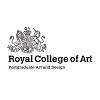
The Royal College of Art (RCA) is a postgraduate institution that has advanced degrees in the areas of Art, Communication, Design, and Humanities. Established in 1837 and serving around 2,300 students, RCA is the only entirely postgraduate institution of university status offering degrees in these specific areas. Programs at RCA are housed in the Schools of Architecture, Communication, Arts & Humanities, and Design.
The School of Communication is home to the Animation Program, which has been in existence for more than 30 years. Leading to an MA, Animation is a multidisciplinary program that takes two-years to complete, full-time. The program explores animation forms, methods and contexts, VR and AR, drawing and illustration, projection mapping, extra-cinematic animation, games and apps, drama, film and media, STEM disciplines, and more.
Other program features include visiting artists and professionals, workshops, multidisciplinary elective options, a collaborative learning environment, and experiential learning opportunities such as field trips to animation studios, museums, exhibitions, and archives.
The Animation MA Program at Royal College of Art culminates with the Independent Research Project that will be presented to the Examination Board.

Emily Carr University of Art + Design (ECU) houses four Faculties: Ian Gillespie Faculty of Design + Dynamic Media, The Faculty of Culture + Community, Audain Faculty of Art, and Jake Kerr Faculty of Graduate Studies. Founded in 1925, ECU is one of British Columbia’s oldest universities, and the only one that focuses on professional education and learning in Design, Media and the Arts.
With more than 2,000 degree-seeking students 1,900 non-degree students Emily Carr University of Art + Design provides programs leading to an undergraduate or graduate degree. ECU’s 12 Continuing Studies Programs have full- and part-time schedules. A few options include User Experience (UX) Design, Illustration, 3D Design, Drawing, Fine Art, and UX/UI Design Associate. All options lead to a Certificate.
The Ian Gillespie Faculty of Design + Dynamic Media has Bachelor of Media Arts (BMA) Programs in 2D + Experimental Animation and 3D + Computer Animation. Both programs are 120 credits and begin with First-Year Foundations Year Studies. Students in both programs will explore the 12 Principles of Animation, production techniques, storytelling, and the animation production pipeline. Both options also provide the option to add a
Course examples for the 2D + Experimental Animation Program include Creative Development for Animation Filmmaking, Storyboarding, Experimental Animation, Motion Graphics, and Story & Structure for Animation. The ECU 2D + Experimental Animation BMA Program culminates with Senior Animation Production I & II, where students will work through their final projects with guidance and advice via one-on-one communication with instructors and peers. Students in these 400 level courses will also participate in workshops and attend lectures and presentations.
The ECU 3D Computer Animation BMA consists of courses such as 3D Layout and Cinematography, Look Development for 3D Computer Animation, Lighting + Rendering Projects, 3D Character Creation, Digital Compositing, and Preproduction for 3D Animation. The program culminates with the Senior 3D Animation Production course, which consists of lectures, presentations, and one-on-one consultation with the instructor. Final projects are student-initiated or initiated through partnerships with research groups or clients, and they may include films, installations, interactive environments, or other projects that feature advanced 3D computer animation techniques.
Animation students at Emily Carr University of Art + Design have access to a state-of-the-art Animation Studio, Sound Lab, Stop Motion Studios and Editing Suites, and Film + Screen Arts Studio. Both BMA Programs also provide the option to add a Minor in Art + text, Curatorial Studies, or Social Practice + Community Engagement.
Graduates of the Animation BMA Programs at Emily Carr University of Art + Design can pursue careers in Education and all areas of Animation and Games, Advertising and Marketing, and Film and Television. Positions in emerging areas for animators such as Legal and Medical are also an option.

RMIT University (RMIT) has an Animation Program with both undergraduate and graduate options. The Bachelor of Design in Animation and Interactive Media is a full-time, three-year program that explores 2D and 3D animation, interactive media, and special effects. Course examples for the program include Animation and Interactive Media Studio 1-4, Animation and Interactive Media Design for Movement, 2D and 3D Animation, Sound Design for animation, Advanced Visual Effects, and 3D Animation Practice.
Graduates of the RMIT Bachelor of Design in Animation Program work as Animators, 3D Visualizers and Modelers, Digital Artists, Art Directors, Character Designers, Motion Graphic Designers, Pre-Production Artists, and Visual Effects Artists. Some program graduates teach, while others have launched their own studios and freelance businesses.
At the graduate level, RMIT has a Master of Animation, Games, and Interactivity and a six-month Graduate Certificate in Animation, Games, and Interactivity that guarantees entry into the Master Program. The RMIT Master of Animation, Games, and Interactivity can be completed in two years full-time or four years part-time. The program equips students for technical careers in all areas of animation, games, and interactive media.
Program features include access to industry-standard technology and contemporary studios, a collaborative learning and production environment with access to industry professionals, academic staff, and research centers such as the Centre for Games Design Research, and the opportunity to work alongside the creative co-working community ACMI X, and exhibit at Melbourne International Film Festival (MIFF).
Course examples for Master’s Program include Animated Narratives, Animation, Games and Interactivity Studio 1-3, The Illusion of Life, Advanced Play Design, Character, Place and Simulation, Research Methods for Design and Digital Media, and Professional Preproduction. In year two of the program, students will complete the Professional Research Project (Animation, Games and Interactivity) worth 24 credit points, and the Animation, Games and Interactivity Industry Portfolio, worth 12 credit points.
Students in both RMIT Animation Programs have access to industry partnerships with the National Gallery of Victoria (NGV), the Australian Centre for The Moving Image (ACMI), ANZ, and the Australia Post. In addition to MIFF, all students have the opportunity to exhibit at festivals and conferences such as the Melbourne International Animation Festival (MIAF), Annecy, MILIA, Siggraph, and LIAF.
Graduates of the Master of Animation, Games, and Interactivity Program at RMIT University can pursue positions in every area of animation, games and interactivity as well as Research with ACMI X and the RMIT Centre for Games Design Research, which includes the Exertion Games Lab (XGL) and Creative interventions, Art and Rehabilitative Technology (CiART). In addition to Research careers, program alumni can pursue careers in 2D or 3D Animation, Character Design, Interaction Design, App and Web Development, Visual Effects, Games Development, Motion Graphics Design, Pre-Production Art, Web Design, VR and AR, and Interaction Design.
Home to 97,000 students from more than 230 countries, and 9,000 educators and staff, RMIT University was founded in 1887 and established as a university in 1992. With an additional campus in Vietnam, RMIT offers hundreds of programs at all degree levels across 17 schools in several academic colleges. The College of Design and Social Context (DSC), which consists of seven schools, houses the School of Design, home to the RMIT Animation Programs.

The main École Supérieure des Métiers Artistiques (ESMA) campus is now located in the Creative Campus, which was built in Montpellier’s new district—The Creative City. The new location is outfitted with state-of-the-art classrooms, sound studios, an auditorium, and the FabLab. Other ESMA campuses include Lyon, Nantes, and Toulouse, France, and Montreal, Canada.
Founded in 1958, ESMA houses the CG Animation Cinema and Special Effects Department, which has two programs for animators: the 3D Animation Cinema & Special Effects leading to a Professional Diploma and the CG Animation & FX Master’s Degree. The Diploma Program includes an eight-week internship, where students can gain hands-on experience in animation before graduating. Available at all ESMA campuses, the 3D Animation Cinema & Special Effects Program has a 100% recruitment rate within nine months of graduation.
Available at the Montpellier, Lyon, Nantes, and Toulouse campuses, the CG Animation & FX Masters explores animation techniques and the animation production pipeline. Students in this program will have the opportunity to create an industry-ready animated short film in groups of four to seven students. The ESMA CG Animation & FX Masters takes three years to complete. Graduates of the program enjoy a 93% recruitment rate within six months after graduation and a 100% recruitment rate within just nine months.
Graduates of the Animation Programs at ESMA have been recruited by Ubisoft, Sony Pictures Imageworks, Illumination Mac Guff, Framestore, Industrial Light & Magic (ILM), Weta Digital, Aardman, Fontes Architecture, IKKS, Mikros Animation, MPC, Untold, A+Architecture, and ba&sh, among others.

RUBIKA specializes in 2D/3D Animation, Design, and Video Games. Programs are collaborative and studio-based, with options across four campuses in Valenciennes (France), Montreal (Canada), Pune (India), and Nairobi (Kenya). With more than 1,300 students attending each year, Rubika has partnerships with more than 300 companies and a 90% employment rate within a year of graduating. Examples of RUBIKA partners include DreamWorks Animation, Gameloft, Pixar, Industrial Light & Magic (ILM), Disney, Illumination Mac Guff, Framestore, Ubisoft, and Aardman.
Launched in 1988, the Animation Program at RUBIKA has 2D Animation and 3D Animation Programs that lead to a Bachelor’s Degree in three years and a Master’s Degree in five years. Program features include several mandatory internships, participation in festivals and contests, annual projects that allow students to work on project and team management, and a Final 3D Animation Project that will be presented to a professional jury.
Graduates of the Animation Programs at RUBIKA are CG Animators, Technical Animators, 2D/3D Animators, VR Animators, Character Designers, VFX Artists, Modeling Artists, Compositing Artists, Shading & Texture Artists, Lighting Artists, Riggers, Layout/Tracking Artists, Lighting Artists and, Set & Environmental Artists. They work at studios such as Aardman, Disney Animation Studios, DreamWorks, Framestore, Illumination Mac Guff, Industrial Light and Magic (ILM), and Pixar.

Founded in 1998, Media Design School (MDS) was the first tertiary institution in the Southern Hemisphere to offer a dedicated program of study in 3D Animation using industry-standard computer graphics software. Today, the school has a three-year, 3D Animation & VFX Program that leads to a Bachelor of Art and Design.
Course examples include Animation: Workflow and Principles, Animation: Mechanics, Expressions and Gestures, 3D Scripting, Technical Director Modelling II, Visual Effects 3D Compositing, Motion Design Production Techniques, Motion Design Animation, Advanced Rigging, Advanced Creature Animation, Advanced Visual Effects Compositing, Mini Project and team Production I-II.
This project-based program can be completed on campus or online, and students will graduate with several short films and a major production to their credit. Major productions are entered into the international film festival circuit.
Student films have been official selections or won awards at the San Diego Comic-Con International Independent Film Festival, SIGGRAH Asia, SXSW Film Festival, Irvine International Film Fest, South Dakota Film Festival, Annecy Festival, Toronto Shorts Film Festival, Rochester International Film Festival, Palm Springs International Animation Fest, Scandinavian International Film Festival, and many others.
Graduates of the 3D Animation & VFX Program at Media Design School are prepared for careers such as Animator, Compositor, 3D Modeler, VFX Artist, Effects Designer, and Technical Director, among others. MDS 3D Animation & VFX graduates have gone on to secure positions at major studios and work on films such as The Hobbit and Avatar. Program alumni have been recruited by Warner Bros., LucasFilm Singapore, Disney, Microsoft UK, DreamWorks, and Weta Digital New Zealand, among others.
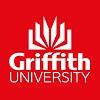
Griffith University (Griffith U) is named after Sir Samuel Walker Griffith, former Queensland Premier and the first Chief Justice of the High Court of Australia, who was the first in the country to introduce degrees in Environmental Science and Modern Asian Studies.
Established in 1975, Griffith U serves around 50,000 students, enrolled in more than 200 degree programs across six campuses in South East Queensland, Australia. Programs at Griffith U are housed in more than 20 schools and departments, including Griffith Film School—the largest school of its kind in Australia.
Also a Toon Boom Center of Excellence, Griffith Film School has an Animation Program that provides the opportunity to collaborate with students in Queensland College of Art and Queensland Conservatorium. Other program features include participation in Experience Week, guest lectures, the opportunity to collaborate on productions with partner institutions such as Beijing Film Academy and Falmouth University, access to exhibitions, Animation masterclasses presented by Gobelins School in Paris and Oscar-winning producer, Lord David Puttnam, and participation in film festivals and exchange study tours.
Leading to a Bachelor of Animation, the Animation Program at Griffith U has four majors: Animating, Art Direction, Technical Direction (CGI), and Streams in Post-Production FX, Script and Stop-Motion Fabrication. Students in all programs have the option to work with 3D puppet or clay animation, experimental media, 2D, 3D, or motion-capture digital animation, or traditional drawn animation. Animation students will have opportunities to work on projects for real clients through LiveLab (Griffith Film School’s commercial production division), and intern with local Animation studios such as Ludo Studio.
Graduates of the Bachelor of Animation Program at Griffith U’s Griffith Film School are prepared to pursue careers in Character Design for 2D and CGI/3D-animated projects, Illustration, Production Management, Visual Effects, Storyboarding, 2D, 3D and Stop-Motion Animation, Compositing, Comics and Graphic Art, Pre-Visualization, Scriptwriting, Matte Painting, and Motion Capture.
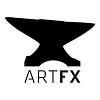
ArtFX, School of Digital Arts, has an Animation Program with two options leading to a Master’s Degree. The 2D Film Animation and 3D Character Animation can be completed in five years. Open to applicants with a Bachelor’s Degree, the Animation Programs at ARTFX feature masterclasses with partner studios, a mandatory internship lasting six weeks (students may complete multiple internships), workshops, and access to state-of-the-art classrooms, labs and studios equipped with software such as Storyboard Pro, Affinity, Krita, SideFX Houdini, Autodesk Maya, Dragonframe, ZBrush, Unreal Engine, and Affinity Photo.
Established in 2004 and serving around 500 students, ARTFX is also recognized Toon Boom Center of Excellence. Students in all programs will complete an animated short film and participate in the program’s End-of-Studies Job Dating Session, which attracts French and international recruiters from top animation studios. ARTFX alumni enjoy a 95% job placement rate within six months to a year after graduating.
The graduation films at ARTFX have won dozens of awards and received more than 900 selections in festivals around the world. Alumni have worked on productions such as The Lion King, Star Wars Episode VIII, The Minions, Gravity, and Ready Player One. Potential job titles include 2D Animator, Character Designer, Animator, Concept Artist, Puppet Animator, Background Artist, Storyboard Artist, and Layout Artist.
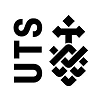
The Faculty of Design, Architecture and Building at University of Technology Sydney (UTS) has an Animation Program with several options including the Bachelor of Design in Animation, Bachelor of Animation Production, and Master of Animation and Visualization. All programs feature hands-on experience, internship opportunities, animation studio courses, and elective options that allow students to develop skills in additional areas in animation.
The Bachelor of Design Program explores 2D and 3D animation, drawing, character development, storytelling, and VFX design. Specific course examples include Animation Studio: Narrative Experimentations, 2D and 3D Context, Advanced Animation Character Rigging, Illustration, Moving Image Design: Animation, and Thinking Through Design. The program culminates with the Animation Studio: Industry Project course.
Graduates of this program are prepared for animation careers in television, film, and multimedia. Animator, VFX Artist, Storyboard Artist, Compositor, Producer, Modeler, Art Director, Character Designer, Concept Artist, Scriptwriter, and Rigger are just a few potential job titles.
The Bachelor of Animation Production at University of Technology Sydney is a three year, full-time program that consists of core courses, communication coursework, and electives.
The UTS Master of Animation and Visualization was developed in partnership with Animal Logic, and it is offered through the UTS Animal Logic Academy. Program highlights include mentoring by industry professionals, learning modeled on real-world production work structures in a custom-built digital studio, and collaborative work practices. Course highlights for the program include The Challenge Studio, The Collaboration Studio, and the Connected Studio.
Career options for graduates of the Animation Programs at UTS include Animator, Animation Scriptwriter, Augmented and Virtual Reality (AR/VR), Character Designer, Compositor, Concept Artist, Director, Editor, Effects (FX) Animator, Matchmover/3D Tracker, Modeler, Previsualization Artist (Previs) Producer, Rigger, Scriptwriter, Storyboard Artist, Rigger, Roto Designer, Stop Frame Model Animator (Claymation), and VFX Artist.
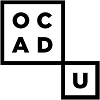
The Faculty of Art at Ontario College of Art and Design (OCAD U) has an Experimental Animation Program that combines contemporary art with AR/VR, 2D and 3D, stop-motion, and digital compositing. Students in the program have opportunities to develop skills in other areas of art and design through more than 90 elective options.
Leading to a BFA, the Experimental Animation Program provides access to projects with real-world industry partners, experiential learning placements such as co-ops and summer internships, and study abroad experiences at the OCAD campus in Florence, Italy or another art and design school through the school’s Mobility/Exchange Program.
Other program features include the opportunity to exhibit at Toronto’s largest free art and design exhibition—GradEx at OCAD U and automatic membership at the non-profit XSPACE Cultural Centre, which houses the student-run gallery—XSPACE. The gallery provides a platform for emerging artists of all kinds. In addition, all OCAD U programs allow students to take a minor in a secondary field of study. More than 25 focused minors are available. Examples include Art and Social Change, Entrepreneurship and Social Innovation, Games and Play, Illustration, Integrated Media, On-Screen, Sustainability, and Wearable Technology.
The Experimental Animation BFA Program at OCAD U prepares students to pursue careers in both Animation and Gaming as well as Film, Video, and TV Production.
Established in 1876 as Ontario School of Art, Ontario College of Art and Design serves nearly 5,000 students, making it Canada’s largest and oldest art and design school. Thanks to the school’s large collection of art and design programs, OCAD U students have several additional options to study animation. Within the Integrated Media and Drawing & Painting BFA Programs, students may specialize in Digital Painting and Expanded Animation. Course examples include 3D Modeling and Animation, Character Design and Animation, Advanced Compositing, Intermediate Animation Studio, Animation” Stop-Motion, and Time-Based Media. Students will focus on a year-long thesis project in the final year of the program. Finished works will be showcased at GradEX, which attracts more than 40,000 visitors.
Other program options include a Minor in Expanded Animation, which can be added to any OCAD U program, and the Photography, Video, and Animation Studio Skills Certificate provided through the School of Continuing Studies. Students in the Certificate Program may choose a minimum of five courses based on their interests. Course examples for students who would like to focus on animation include Stop-Motion Puppet Making Studio, Introduction to 3D Animation with Blender, Character Design Studio, Introduction to Screenwriting, and Storyboarding for Media Production.
A collaboration of the Faculties of Art, Design and Liberal Arts & Sciences, the Experimental Animation Minor combines drawing, media art, graphic design, and experimentation. Animation Fundamentals, 3D Modeling & Animation, Animated Illustration, Advanced Animation Studio, and Animation-Stop-Motion, are a few course examples. The Experimental Animation Minor at OCAD U can also be taken as a Post-Graduate Certificate.

Pearson College London (PCL) houses Escape Studios, which provides programs in Animation, Game Art, Motion Graphics, and Visual Effects. All PCL programs have been created in partnership with major studios such as PlayStation London, Framestore, and DNEG. Pearson College of London is also a Houdini Certified School and an Unreal Engine Authorized Training Center—one of the few in the UK.
Students in all PCL programs have the opportunity to network with industry partners such as Cinesite, Industrial Light & Magic (ILM), London Studios, MPC, Passion Pictures, Blue Zoo, State of Play, and Jellyfish Pictures. Internships and study abroad opportunities are part of the PCL programs as well as access to artists who have worked for DreamWorks, Warner Bros., Fox, and Disney.
Founded in 2002, Escape Studios at Pearson College London has the following degree pathways for animators: BA/MArt in The Art of Computer Animation (Integrated Masters) and MA Degrees in 3D Animation, Character & Creature Creation, and Storyboarding & Previsualization. Short Programs lasting anywhere from eight to 20 weeks are available and include examples such as 3D Animation (20 weeks), Advanced Animation (18 weeks), Storyboarding & Previsualization (12 weeks or 18 weeks), and 2D Animation with Toon Boom Harmony (12 weeks), Animation (12 weeks).
Students in all Escape Studios programs will complete intensive training sessions on industry-professional software such as Maya and Toon Boom Harmony. Programs also take place in classrooms that look and feel like real animation studios. Students will have the opportunity to master all areas of the animation production pipeline.
PCL - Escape Studios graduates have worked on productions such as Harry Potter, Star Wars, Avengers, Captain America: Civil War, Ex Machina, Fantastic Beasts and Where to Find Them, Gravity, Interstellar, Star Wars: The Force Awakens, and The Jungle Book. PCL alumni have also worked on games such as Assassin’s Creed and Forza Horizon, and award winning advertisements. Many program alumni have gone on to launch their own studios or freelance businesses.

MoPA School of Animation (MoPA) dates back to 1988, when it launched as Supinfocom School—the first French institution of its kind devoted entirely to CGI. Supinfocom became MoPA School of Animation in 2015. In 2022, MoPA became a member of a network of schools known as the BRASSART Group. Located across 14 cities in France, the Group specializes in 3D Animation, Video Games, Audiovisuals, and Graphic Arts and Design.
MoPA features include access to 200 computers across MoPA’s studios, which house the same equipment and software used in professional studios, internship opportunities, and study abroad experiences.
The Animation Program at MoPA utilizes a project-based teaching method that emphasizes collaboration and teamwork. Leading to an Expert Diploma in 3D Design, Production, and Animation (Baccalaureate), the program takes five years to complete, which includes a preparatory year and two cycles: Fundamentals and Training and Professional Development. Examples of areas explored across the Prep Year and Cycles include rigging, body mechanics, facial animation, acting, body language, emotional expressions, compositing, and tracking.
In the final year of the program, students will work in teams of four to six to produce a short animated film under real studio conditions. Student films at MoPA are presented at the Final Year Jury in the Theatre of Arles. The event attracts 2,000 artists and spectators. After this public screening, student films will make their way through the International Film Festival circuit. MoPA graduates are prepared to seek careers in all areas of animation and game art, among others.

Beijing Film Academy (BFA) is China’s only film academy and the largest film school in Asia. Established in 1950 as the Performance Art Institution of the Film Bureau of the Ministry of Culture, BFA opened with just 38 students. Today, BFA serves more than 2,000 students across 15 departments and schools.
The Animation School at Beijing Film Academy launched in 2000 with one Animation Major in the Department of Fine Arts of BFA. When it opened, the Animation School was the first academic unit of its kind in China. Today, the BFA Animation School serves more than 350 students enrolled in Programs leading to a BA, MFA or PhD. BFA has collaborated on projects with Massachusetts Institute of Technology, MIT, Gobelins, l'école de l'image (Gobelins, School of Images), Straight Entertainment (Hollywood, CA), and Taylor’s University, among others.
All Beijing Film Academy students benefit from interdisciplinary studies, long-term cooperative relationships with the major studios in China and abroad, participation in exchange workshops with the Korean Academy of Film Art (KAFA) or the Netherland Film Academy (NFA), and the opportunity to participate in the student film festival known as “Cinerent Award.” Graduates of the Animation Programs at Beijing Film Academy go onto establish careers in all areas of Animation, Film, Gaming, Television, and Visual Effects, among others.
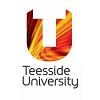
Animation students at Teesside University have access to state-of-the-art engineering and production facilities, instructors who are leaders in the film, television, and animation industries, and networking opportunities with industry professionals through Animex—Teesside’s International Festival of Animation and Computer Games featuring industry leaders from Disney, Sony, Pixar, and Rockstar Games, and ExpoTees—the school’s Annual Exposition of final year student works. Teesside Animation students also benefit from Teesside’s strategic partnerships with local employers in all sectors, and major studios and companies such as Industrial Light & Magic (ILM), Double Eleven, Ubisoft, Animmersion, Cubic, and Creative Assembly.
Housed in the Department of Transmedia, Digital Art & Animation in the Teesside School of Computing, Engineering & Digital Technologies, the Animation Program consists of an Animation MA and BA Degrees in Concept Art, 2D Animation and Stop Motion, Visual Effects, and Animation. All programs provide an optional Foundation Year, short work placements, internships, and other work experience opportunities. Programs culminate with a film sequence or short film
Founded as Constantine Technical College in 1930, Teesside University serves close to 21,300 students enrolled in dozens of programs in five schools. School of Computing, Engineering & Digital Technologies graduates have worked on films and AAA games such as Red Dead Redemption 2, Star Wars: The Last Jedi, and Spider-Man: Far From Home.
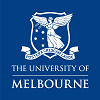
The Faculty of Fine Arts and Music at University of Melbourne (est. 1853) houses the Victorian College of the Arts (VCA), home to the Animation BFA Program. Students in this program will study and work in an intensive, experimental studio-based environment that allows collaboration with peers in programs across Film and Television, Production, Visual Art and Design, and Music and Performing Arts.
Courses for the program explore animation research and techniques, storyboarding, experimentation, world building, sound production, writing, project planning, and character creation. Course examples include Animation Studio, Writing for Animation, Animation Lab, and Collaborative Production. Animation BFA students will have the opportunity to animate, direct, write, and edit short animated film in each year of the program.
The Animation BFA Program at University of Melbourne can be completed in just three years, full-time. Program alumni are prepared for animation careers in the film and television industries, game design, advertising, information, exhibit design, and community arts, among others.
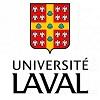
The Faculty of Planning, Architecture, Art and Design at Université Laval houses the School of Design, home to the Bachelor of Animated Art and Science (B.Anim.) and the Certificate in the Art and Science of Animation. The Certificate Program consists of courses such as Animation Production, Animation Methodology, Storyboarding, Digital Image in Animation, Storyboarding, 3D Modeling and Animation, Graphic Animation (Motion Design), and Sound Dimension of Animation. Offered entirely online, the Certificate Program takes one year to complete.
The B.Anim. is collaborative and project-based, and explores games, cinema, 3D virtual environments, and design (advertising, multimedia, and television). Students will have opportunities to collaborate with peers on projects, complete individual projects, enroll in the internship program, complete a portfolio, and participate in the Université Laval Placement Service (SPLA) event, which attracts employers from the animation industry.
Students in both Université Laval Animation Programs have access to digital video and sound capture and editing laboratories, a motion capture and facial capture system, and an entertainment room with green screen.
Founded in 1852, Université Laval serves more than 47,000 students enrolled in 500+ programs across 17 faculties and over 60 departments, schools, and institutes. Graduates of the schools Animation programs are prepared for careers in Animation, Film and Television, and Video Games, among others. Examples include 2D and 3D animation, feature and documentary films, interactive games, visual arts, multimedia design, and advertising.

Established in 1991, Nanyang Technological University (NTU) serves 33,000 students making it one of the two largest public universities in Singapore. The College of Humanities, Arts, and Social Sciences (CoHASS) at NTU houses the School of Art, Design and Media (ADM) which focuses on interdisciplinary learning programs, collaborative classrooms, and experiential learning such as projects, fieldwork, internships, and study abroad programs.
For animators, NTU’s School of ADM has a Media Art Program that combines Digital Animation, Games, Digital Filmmaking, and Photography. Leading to a BFA, the Media Art Program allows students to add a Minor from a list of more than 40 options. Examples include Design and Systems Thinking, Film, and Science, Technology, and Society.
Course examples for the NTU Media Art BFA Program include 3D Character Animation, 3D Production, Storyboarding & Production Design, Rigging for Animation, Digital Compositing, Writing for Animation, Lighting and Rendering Pipeline, Advanced Stop Motion, Visual Effects I-II, Game Design, Film Editing, and Digital Photography.
Graduates of the Media Art Program at Nanyang Technological University are prepared to pursue careers in Animation, Game Art and Design, Film, Advertising, and VFX.

University of Hertfordshire (UH) houses the School of Creative Arts, which serves a large number of the school’s 30,000+ students. Established in 1952 as Hatfield Technical College, UH opened with just 1,500 students.
The UH School of Creative Arts has BA Degree options in 2D Digital Animation and 3D Animation & Visual Effects. At the graduate level, the school has an Animation MA that emphasizes multidisciplinary studies, research, and project-based work. Students in this program will actively participate in lectures, seminars, workshops, work placements, and the study abroad year. Other Animation MA Program features include the opportunity to complete a simulated brief in collaboration with program alumni and organizations such as Promise and National Poetry Day.
Graduates of the University of Hertfordshire Animation Program have been recruited by Industrial Light & Magic (ILM), Blue Zoo, and Creative Assembly, among others.
At the undergraduate level, 2D Digital Animation and 3D Animation & Visual Effects BA will have opportunities to complete several projects, including a final film project to be screened at the School of Creative Arts animation Exposé. Students will also complete a number of simulated real-world briefs, a portfolio of their best work, and internships and study abroad experiences at partner universities in throughout Europe, and in Australia, South America, Africa, Canada, and Asia.
University of Hertfordshire graduates enjoy a 96.5% employment rate. UH School of Creative Arts alumni have won Emmy’s BAFTAs, and Oscars for their work on productions such as Game of Thrones, Harry Potter, Avatar, The Chronicles of Narnia, Gravity, The Jungle Book, Inception, Star Wars, and The Lion King.

The School of Animation at ChungKang College of Cultural Industries (ChungKang) has an Animation Program that consists of three years of college coursework, followed by one year of intensive training in the Animation Major. The curriculum for the program is studio- and project-based, workshop intensive, and multidisciplinary, allowing students to study cartooning, game design, and animation. The curriculum also explores animation production, planning, directing, and post-production.
Course examples for the program include Animation Genre & History, Experimental Animation, Visual Storytelling, Animation Sound, Digital Imaging, Animation Directing, Character Design, 3D Animating, Techniques of Digital Animation, Visual Development, Animation Acting, Storyboarding, Advanced Animation pre-Production, and CFX Simulation. Intensive workshops include 2D Animation Production I-II, 3D Modeling, and 3D Animation.
Other program features include access to state-of-the-facilities, including the largest animation studio in Korea, a sound recording studio, and a render farm, courses taught by industry professionals, a tutoring program, opportunities to gain experience through mandatory internships (local and overseas), independent study opportunities, and portfolio development.
The Animation BA Program at ChungKang College of Cultural Studies culminates with the Animation Project—Capstone Design.
ChungKang College of Cultural Industries opened in 1996 as South Korea’s first post-secondary institution to focus primarily on the cultural industries. Today, in addition to Animation, ChungKang houses the Schools of Manhwa Contents, Games, Culinary Arts, Fashion & Beauty Style, Musical & Theatre, Mobile IT, and the Department of Early Childhood Education.

The Digital Media Arts (DMA) Program at York University (York U) is a collaborative effort by Computational Arts in the School of Arts, Media, Performance, and Design (AMPD) and Electrical Engineering and Computer Science in Lassonde School of Engineering. DMA is Ontario’s only degree program that integrates Computer Science, Engineering, and Art. Leading to a BA, the program provides the opportunity to study animation.
Required courses for all DMA students are the same, regardless of School. However, Lassonde School of Engineering students will have access to electives in Computer Science or other related areas, allowing them to explore AR/VR, Graphics and Visualization, Artificial Intelligence, User Interfaces, Data Mining, and Robotics. Lassonde students will also explore 3D modeling and simulation, interfaces, effects and animation, and physical and virtual worlds.
Across programs, students will study code and programming tools for games, interactive performance, the internet of things (IoT), immersive and 3D environments, and data visualization. Students will choose from three streams (specializations): Digital Media Game Arts, Digital Media Arts, and Digital Media Development. Game Arts provides courses such as Introduction to 3D Animation, Simulation and Animation for Computer Games, and Introduction to Modeling.
Both DMA pathways include Collaborative Project Development courses and opportunities to gain work experience through the York U Internship Program.
The DMA Programs at York University culminate with a Digital Media Capstone Project. Program alumni are Animators, Game Developers, Illustrators, UI/UX Designers, AI Software Developers, Cartoonists, VFX Artists, Developers, and Directors, and New Media Artists.
Established in 1959 and serving more than 52,000 students from 178 countries, York U is the third largest university in Canada. More than 200 undergraduate and graduate degree programs are available across 10+ colleges and schools.

Image Campus has 2D Animation, 3D Animation, and Motion Graphics Programs that can be completed on campus or 100% online in four to nine months or three years. The shorter programs lead to a Certificate of Approval. Three-year programs lead to a post-secondary degree.
All options explore the 12 Principles of Animation. Students will also take courses that explore areas such as Character Animation, Storytelling, Drawing Tools for Animation, Human Locomotion, Acting, and Sound. Across options students will participate in workshops, seminars, and the internship program.
Graduates will leave the Animation and Motion Graphics Programs at Image Campus with a portfolio of their best work or a demo reel. Around 95% of Image Campus Animation alumni are working in the industry. Examples include Video Art and Animation, 3D Animation for Videogames, Advertising, Production and Animation 3D, Comprehensive Realization of Cartoons, Video Game Development, and Production and Game Design, among other areas.